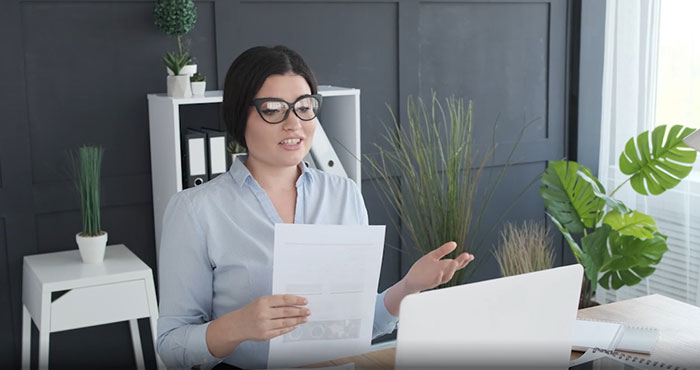

COVID-19 has required us to make rapid and multiple changes to the way we work and leaders have been expected to adapt quickly and support their teams.
This can seem overwhelming to managers and supervisors, who are trying their best to absorb loads of advice, and massage that information into some form of behavioural action in a sustainable way.
What leaders need is a low-risk, high-impact behavioural response.
That is why we have developed this training program on The Power Of Routine Check-In Conversations.
The Power Of Routine Check-In Conversations
One of the most practical ways that leaders can support employees impacted by COVID-19 is to conduct one on one, routine, semi-structured check-in conversations with their direct reports.
In simple terms, regularly asking them how they are and what they need?
This takes the pressure out of trying to predict what people need and reduces mental effort, as suggestions and solutions come from the conversation process.
Consultation enables relationships and drives success.
We suggest you collaborate with your team on a small set of questions to share during check-ins. Questions they can reflect on, and prepare answers for ready for the consultation process. Simple questions like:
- How’s it all going?
- What’s been going well or according to plan?
- What if anything, has been a challenge or a bother for you?
- How have you decided to handle that?
- Is there anything that I, or a colleague, can do to help you?
Make sure you outline sources of support, such as the EAP. You could also offer to create an individual support plan with or for them. Always document your conversations and follow up on agreed actions.

If you feel you have too many direct reports to provide regular check-ins, then we suggest a buddy-system and peer- to-peer mentoring, so that no one is left for too long without the benefits of this ‘reflective and solution- focused’ process.
The check-in conversation might be extended, during times of challenge or change, by a quick ‘ready-to-work’ dashboard, such as:
- Do you feel well and ready to work?
- Are you clear on the work tasks you need to do?
- Do you have practical ways to manage your focus and wellbeing?
- Have you been in touch with workmates to check-in?
- Are you in a position where you can work safely (without distraction)?
The multiple benefits to this process
This structured check-in is critical leadership behaviour which has multiple benefits. This includes:
- Employees perceive regular support from managers. Research suggests this is strongly associated with better wellbeing outcomes for employees after stressful events
- It’s a great tool for identifying needs, providing support and early problem–solving
- It allows you to scan for signs of stress or declining mental health
- Employees begin to ‘brief up’ to leaders about how things are going and what they might need
- Feedback becomes easier
- It maintains engagement and builds relationship credits
- It helps to cover issues of diversity and inclusion, because you’re asking each individual what it’s like for them and what they need to perform and thrive
- It provides clarity and realistic expectations
- It allows leaders to provide reassurance and empathy during times of challenge and change
- And it helps to identify any of the 8 psychosocial risk factors in the workplace. These include work overload, conflict, coping with change and a lack of ‘sense of’ control, support, connection, recognition, role-clarity and fairness.
The L.E.A.D.S method for emotional conversations
During check-ins, there’s the possibly of strong emotions arising – such as anxiety, frustration, distress and or grief.

A focused and compassionate way of defusing emotions and discovering the main issue – is the L.E.A.D.S. method, which strikes a balance between listening first and then collaborative problem-solving.
LEADS stands for Listen, Empathise, Ask, & Discuss Steps
Listen with your full attention. Show them that you’re listening. If in doubt, check for understanding
Empathise with their feelings using simple phrases of acknowledgment and reassurance
Ask questions to clarify what they want, need and expect to happen (this also defuses emotions)
Discuss the issue at hand, take your time and share solutions in a 2-way process
Step out what action you both can and will take and always follow up later
It helps to be able to recognise the signs of mental health issues & declining wellbeing in your employees. General signs you may want to look out for include:
- Emotional responses and erratic behaviour— uncharacteristic behaviour which may be overly sensitive, irritable, angry, teary or tense
- You may want to look out for Increase in use of negative language and workplace conflict
- Physical symptoms such as appearing tired, headaches etc
- Decline in physical appearance and personal grooming
- Reduced levels of performance
Signs of disengaged employees include:
- ̈Absenteeism
- Lack of discretionary effort
- Absence of teamwork
- Decline in productivity
- Decline in work quality
- Avoidance of team social interactions
Signs of professional Burnout include:
- Compassion fatigue
- Emotional exhaustion
- Reduced motivation
- Increased cynicism
- Negativity
- Sense of isolation

Signs of trouble in teams/workplaces include:
- Higher levels of unplanned absences
- Frequent misunderstandings or open conflict
- Slowed progress with projects or tasks
- Complaints about service
- Not much fun or humour at work – morale is down
- People not feeling safe enough to raise issues
- Higher reported levels of stress and pressure
How You Can Positively Influence a Mentally healthy Workplace
If you notice any of these signs emerging, you are in the strongest position to positively influence a mentally healthy workplace.
There are a multitude of things you can do including:
- Creating a culture where everyone feels valued
- Catching them doing things right and telling them about it
- Speaking openly about mental health
- Providing regular, honest and constructive feedback
- Developing your communication and listening skills.
- Rewarding ingenuity and effort
- Providing flexible work arrangements which can assist with reducing work- related stress and will give your workers a sense of empowerment and control
- And finally … encouraging employees to seek professional help if their usual coping mechanisms aren’t resolving the symptoms
Good luck with it all!
More information on mental health and wellbeing for managers in the workplace is available in our latest series.

